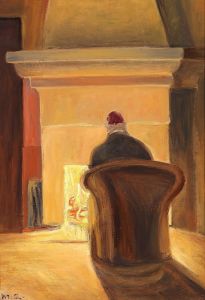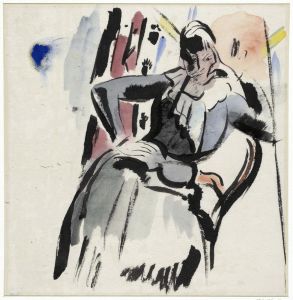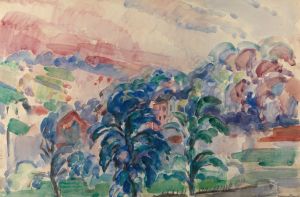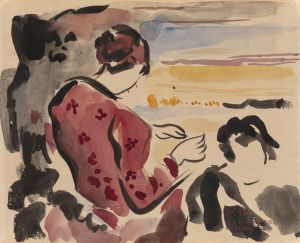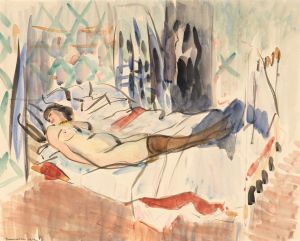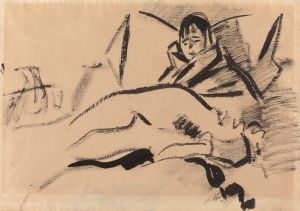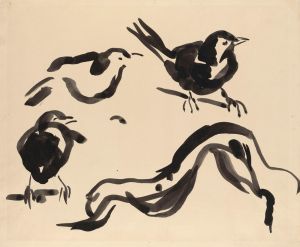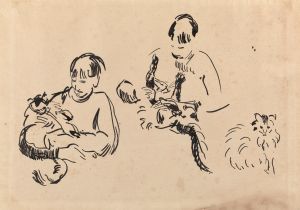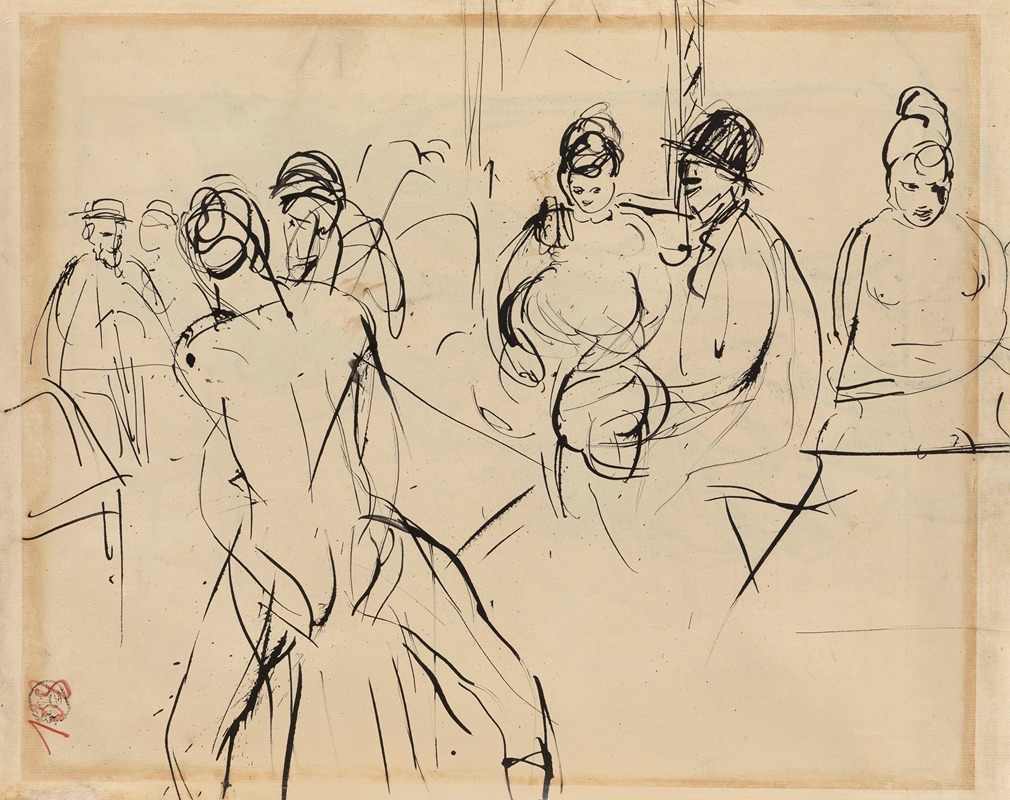
James Ensor, Willem Paerels and Auguste Oleffe in an Antwerp Brothel after a Vernissage at Kunst van Heden
A hand-painted replica of Rik Wouters’s masterpiece James Ensor, Willem Paerels and Auguste Oleffe in an Antwerp Brothel after a Vernissage at Kunst van Heden, meticulously crafted by professional artists to capture the true essence of the original. Each piece is created with museum-quality canvas and rare mineral pigments, carefully painted by experienced artists with delicate brushstrokes and rich, layered colors to perfectly recreate the texture of the original artwork. Unlike machine-printed reproductions, this hand-painted version brings the painting to life, infused with the artist’s emotions and skill in every stroke. Whether for personal collection or home decoration, it instantly elevates the artistic atmosphere of any space.
Rik Wouters, a prominent Belgian painter and sculptor, created the artwork titled "James Ensor, Willem Paerels and Auguste Oleffe in an Antwerp Brothel after a Vernissage at Kunst van Heden." This painting captures a moment involving three notable figures in the Belgian art scene: James Ensor, Willem Paerels, and Auguste Oleffe. The setting is an Antwerp brothel, following a vernissage, or art exhibition opening, at the Kunst van Heden, an influential art society in Belgium.
Rik Wouters was known for his vibrant use of color and expressive style, which was influenced by Fauvism and Impressionism. His works often depicted intimate and everyday scenes, capturing the essence of his subjects with a dynamic and vivid approach. This particular painting is no exception, as it portrays a candid and lively moment among fellow artists.
James Ensor, one of the figures depicted in the painting, was a renowned Belgian painter and printmaker, known for his avant-garde style and satirical works. Ensor's art often featured grotesque imagery and themes of death and masks, reflecting his unique perspective on society and human nature. His presence in the painting highlights the interconnectedness of the Belgian art community during this period.
Willem Paerels, another figure in the painting, was a Belgian painter associated with the Brabant Fauvism movement. His works were characterized by bold colors and expressive brushwork, similar to the Fauvist style that influenced Wouters. Paerels' inclusion in the painting underscores the camaraderie and shared artistic pursuits among these artists.
Auguste Oleffe, the third figure, was also a Belgian painter and a contemporary of Wouters. Oleffe was known for his landscapes and genre scenes, often depicting the Belgian countryside and everyday life. His participation in the scene depicted by Wouters suggests a shared social and professional milieu among these artists.
The setting of the painting, an Antwerp brothel, adds a layer of intrigue and complexity to the scene. Brothels were often depicted in art as spaces of both vice and vitality, reflecting the dual nature of urban life. The choice of location may suggest a moment of relaxation and camaraderie among the artists after the formalities of the vernissage.
The Kunst van Heden, where the vernissage took place, was an important art society in Belgium, promoting contemporary art and providing a platform for artists to exhibit their work. The society played a significant role in the development of modern art in Belgium, supporting artists like Wouters, Ensor, Paerels, and Oleffe.
Rik Wouters' painting thus serves as a snapshot of a vibrant and dynamic period in Belgian art history, capturing the interactions and relationships among key figures in the art world. Through his expressive style and choice of subject matter, Wouters offers a glimpse into the social and artistic life of early 20th-century Belgium, highlighting the interconnectedness of artists and the cultural milieu in which they operated.






